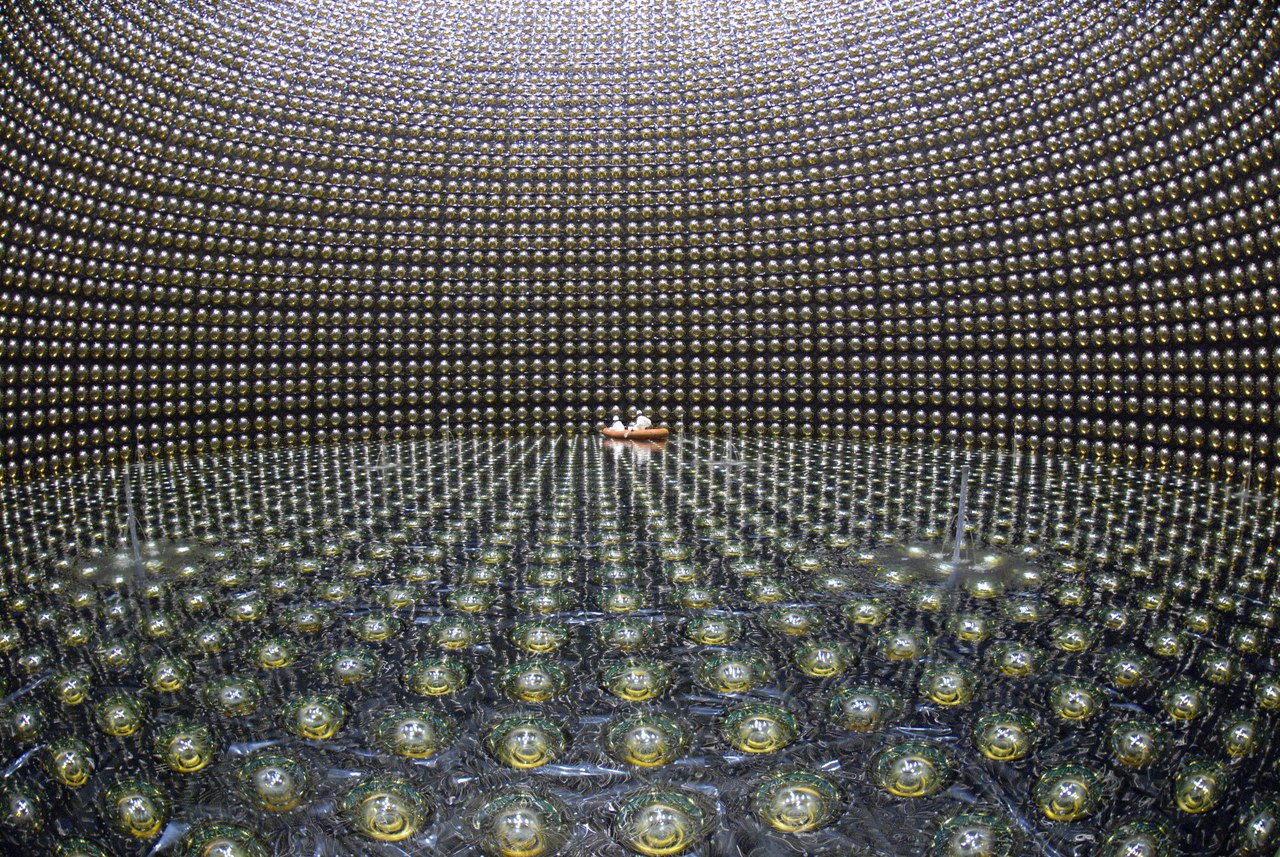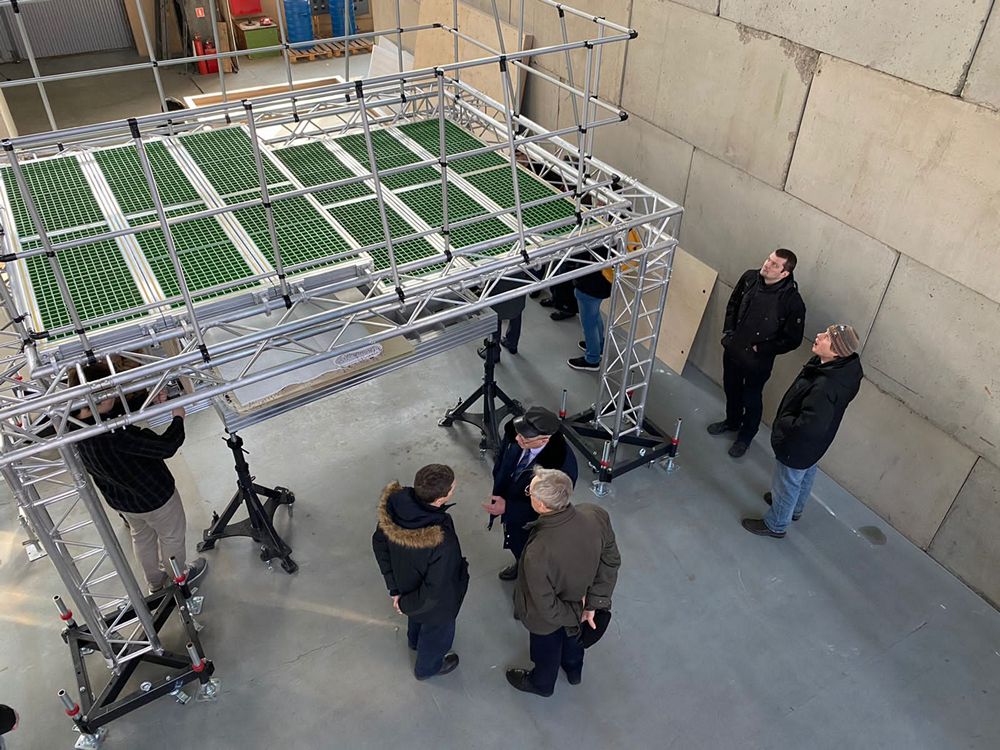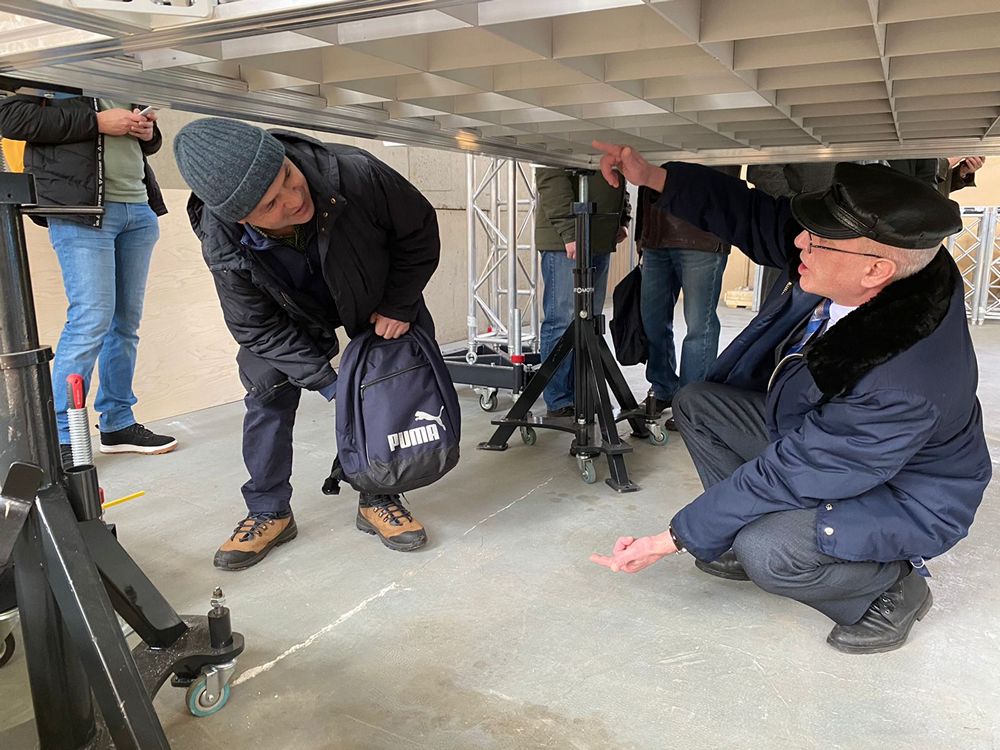On way to assembling active target of T2K experiment
News, 07 June 2022
Employees of DLNP JINR have manufactured the equipment for assembling the active target (new SuperFGD type) of the Near Detector ND280 in the T2K experiment in a very short time. The unique SuperFGD target comprises about two million scintillation cubes pierced in three directions by fibres spaced one centimetre. The assembly equipment developed and manufactured by DLNP specialists contains a system to reach the detector from above for assembling its components, a platform housing the detector during technological processes, and shipping containers for transporting both scintillators and assembly equipment components.
The assembly platform is a table with a lattice-shaped top made of steel plates. There is a box placed on the steel plate edges. The active target will be assembled in this box with a great accuracy. The reach-from-above platform allows varying the height and will be used for inserting vertical wavelength-shifter fibres through cube layers.
These engineering designs were approved by the T2K subgroup. The development of the equipment had to meet many different requirements, and a large number of calculations of static and dynamic load had to be made using the finite element method. Specialists presented calculations of the seismic stability of the equipment, and they also developed and introduced detailed reports and operation documentation.
Noteworthy is that this project was made from scratch by the team of young engineers who started their careers at our Institute not so long ago. All the necessary management and technology stages were passed, including the undersigning of the Protocol on cooperation in science and technology with INR RAS, compiling the requirement specification, drafting, designing, and engineering. Specialists of the DLNP Design Department (DD) performed the project under the guidance of Head of the Department Nikolay Vasilevich Kirichkov and Head of the DD Group of Electrophysical Equipment Andrey Shaykovsky along with colleagues of the DLNP Experimental Department of Multiple Hadronic Processes (EDMHP).
At the moment, specialists are preparing the equipment for its transportation first to INR of RAS, and then to J-PARC, the proton accelerator complex in Japan. It is worth noting that the interaction between experts at DLNP experimental departments becomes seamless, and so does the cooperation with colleagues at leading scientific centres of the Russian Federation.
 Project group in the assembly hall of DLNP
Project group in the assembly hall of DLNP
T2K (Tokai-to-Kamioka) is a neutrino experiment designed to study the way a neutrino changes its “flavour”, for example, to detect the violation of CP symmetry in neutrino oscillations. A proton particle accelerator (synchrotron) produces accelerator neutrinos . The facility is located in the J-PARC centre in Tokai village in the east of Japan (140 km north of Tokyo). The T2K experimental facility was developed, constructed and is operated by an international collaboration consisting of 500 scientists from 12 countries. In 2020, a group of the Laboratory of Nuclear Problems JINR joined the work on the modernisation of the ND280 near detector for the second phase of the T2K experiment.
The group takes part in the creation of the unique active scintillation target of a new type for ND280 that comprises about two million scintillation cubes pierced in three directions by optical fibres. Employees have conducted research on optical properties of the target elements and cross references between them. DLNP colleagues have developed and created a special platform — a base for assembling the target and a system to reach the detector from above, which allows assembling the target in layers, first on strings , and then on optical fibres. Our colleagues have developed a NIM standard board for the target calibration. DLNP physicists are engaged in processing data from past T2K experiments and searching for New Physics (so-called dark photons) using events from the near target of the experiment.
Moreover, DLNP JINR physicists have made a decisive contribution to precision measurements of hadron yields in proton-carbon interactions at 30 GeV in the NA61/SHINE experiment at the SPS accelerator at CERN. This data is used to accurately calculate the spectra and fluxes of neutrinos and antineutrinos in the T2K experiment.


